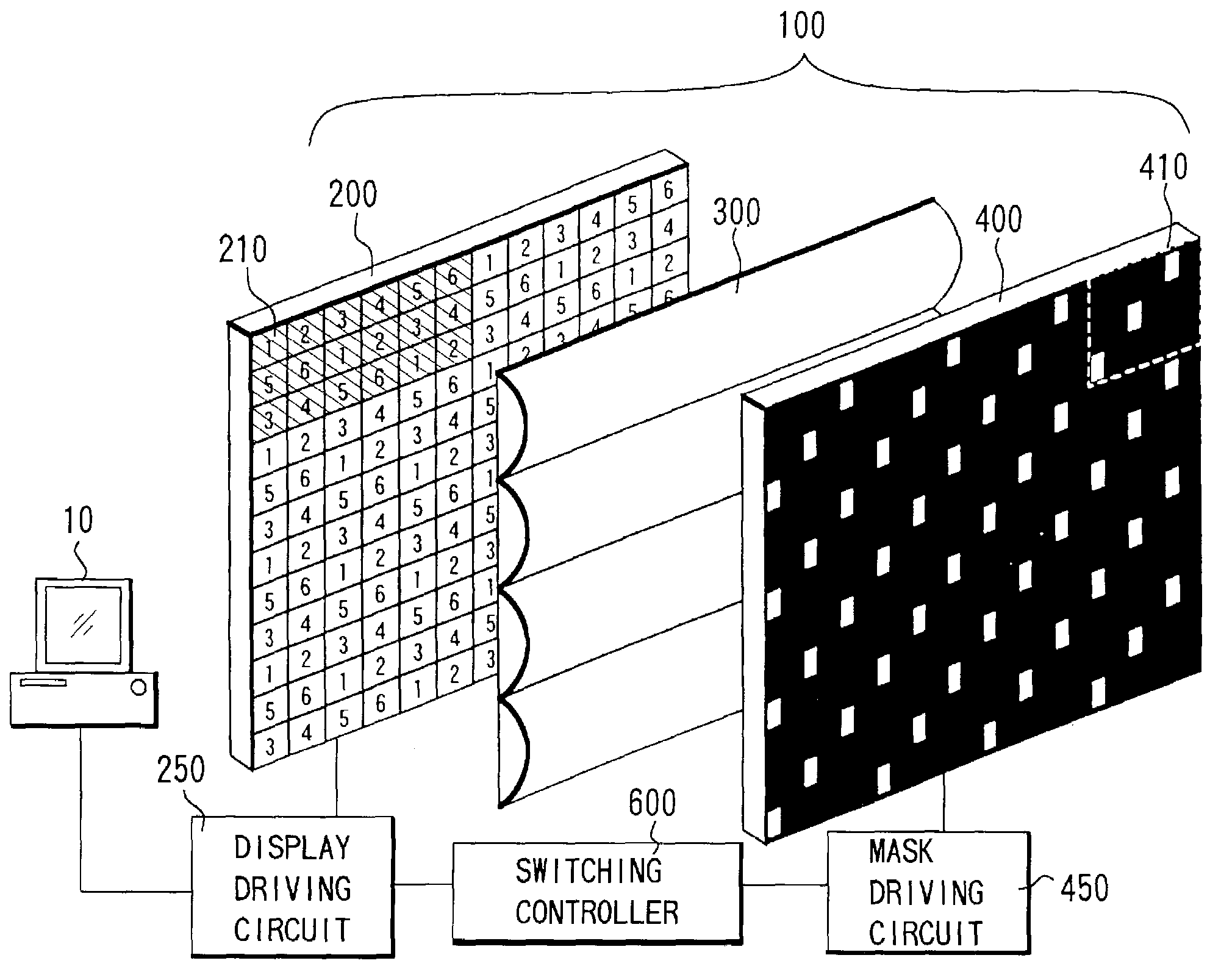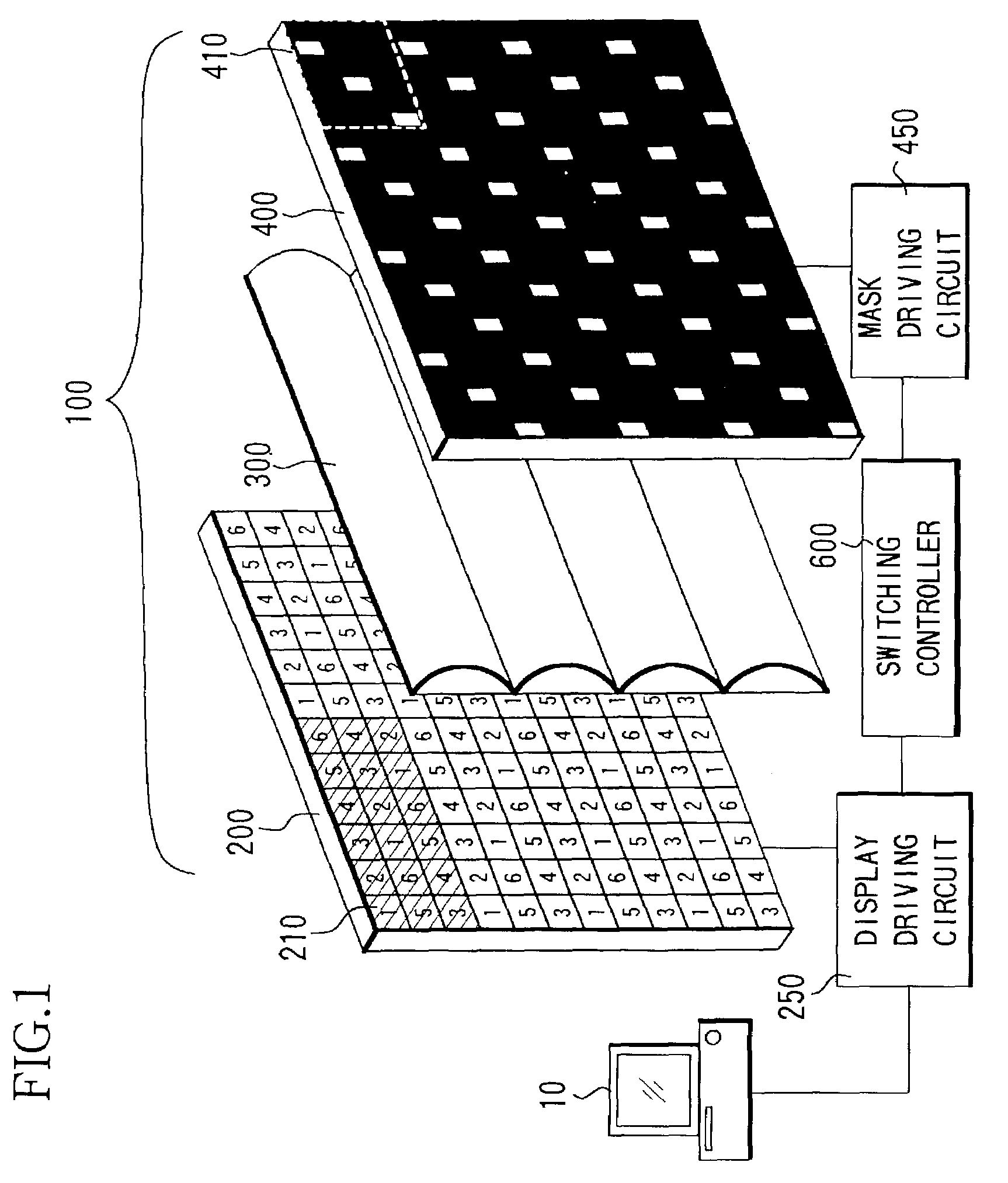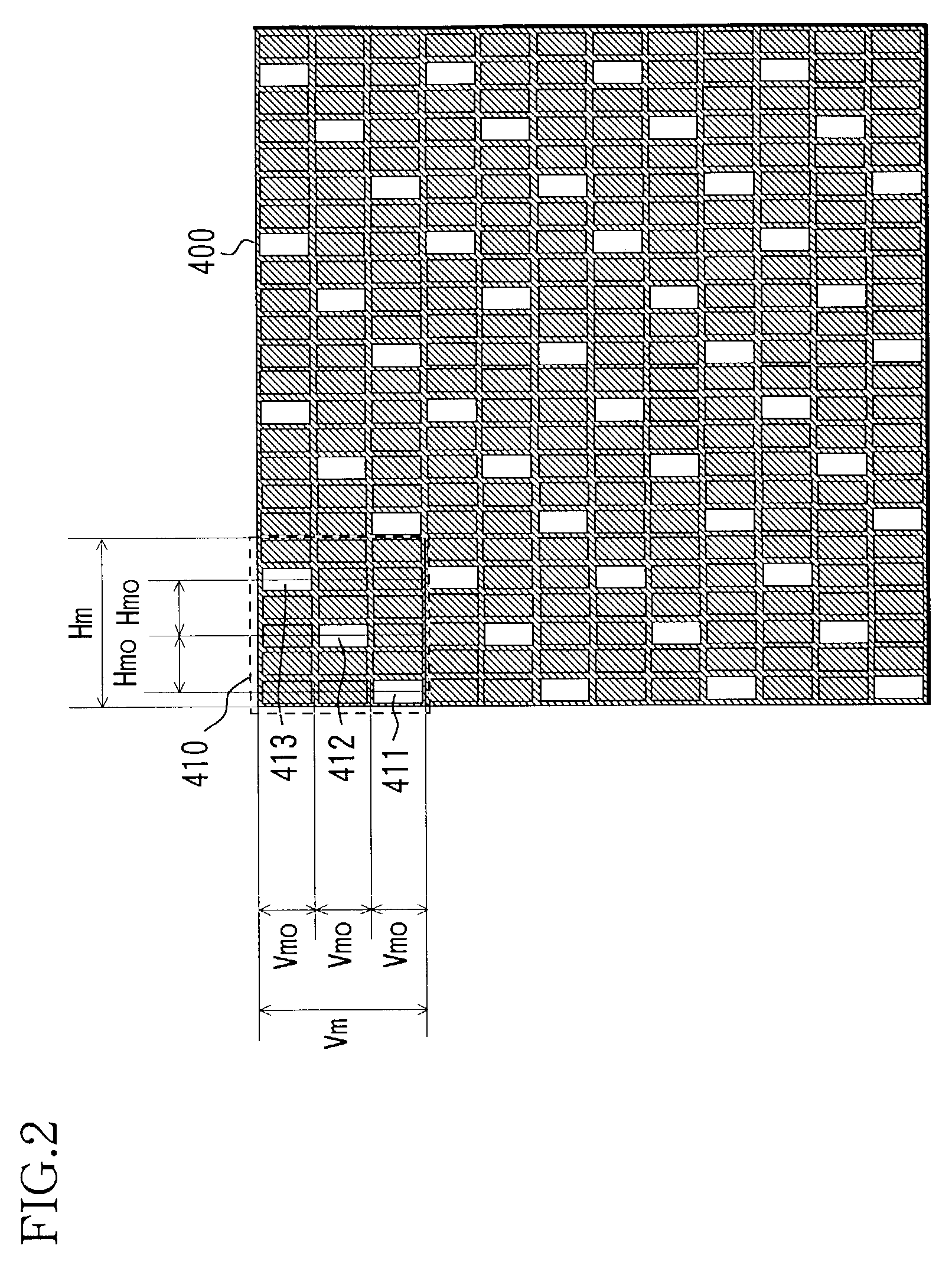Stereoscopic image display apparatus and stereoscopic image display system
a stereoscopic image and display apparatus technology, applied in the direction of instruments, static indicating devices, optical elements, etc., can solve the problems of deteriorating image quality, unbalanced image, difficult to recognize stereoscopic images as one smooth image, etc., and achieve high-resolution display and low degradation of image quality
- Summary
- Abstract
- Description
- Claims
- Application Information
AI Technical Summary
Benefits of technology
Problems solved by technology
Method used
Image
Examples
embodiment 1
(Modified Example of Embodiment 1)
[0132]FIGS. 15 and 16 show two examples different respectively from the above-described embodiment having six types of combined parallax images and mask aperture patterns that are switched with synchronizing with one another.
[0133]In both drawings, the combined parallax images and mask aperture patterns that are enclosed by dotted lines form pairs synchronously switched.
[0134]In FIGS. 15 and 16, mask aperture patterns 4001′ and 4001″ are selected when combined parallax images 521′ and 521″ are displayed, mask aperture patterns 4002′ and 4002″ are selected when combined parallax images 522′ and 522″ are displayed, and mask aperture patterns 4003′ and 4003″ are selected when combined parallax images 523′ and 523″ are displayed. In addition, mask aperture patterns 4004′ and 4004″ are selected when combined parallax image 524′ and 524″ are displayed, mask aperture patterns 4005′ and 4005″ are selected when combined parallax images 525′ and 525″ are disp...
embodiment 2
(Embodiment 2)
[0142]FIG. 17 is an explanatory diagram for explaining the principle that color separation arises in a viewpoint when one pixel on a display unit is constituted by subpixels having 3 (=n) colors of red (R), blue (B), and green (G), and viewpoint images are displayed every subpixel.
[0143]In addition, FIG. 17 is a section in pixels in a first row when one pixel on the display unit 200 is constituted by three subpixels (n colors of pixels), which is shown in the Embodiment 1.
[0144]As shown in FIG. 17, in the display unit 200′, subpixels of R, B, and G corresponding to three pixels line up in the horizontal direction.
[0145]Rays of light emerged from the subpixels constituting pixels 1, 2, and 3 on the display unit 200′ pass through an aperture portion 411′ in a mask 400′ by receiving an optical action of a lenticular lens 300′ to form strip-shaped viewpoints 1e, 2e, and 3e with width He.
[0146]At this time, as shown in the drawing, images by red subpixels R arranged in left...
embodiment 3
(Embodiment 3)
[0179]FIG. 25 shows the structure of a multiviewpoint image display apparatus that is Embodiment 3 of the present invention. This embodiment aims to further eliminate the color separation by distributing subpixel groups, displaying one viewpoint color image, vertically and horizontally so as to obtain the afterimage effect effectively like Embodiment 1. In the drawing, members to which the same reference numerals and characters as those in Embodiment 1 are assigned have the same functions as those in Embodiment 1.
(Description of Stereoscopic Image Display Apparatus 102)
[0180]The stereoscopic image display apparatus 102 comprises a display unit 202, a lenticular lens 300, and a mask 402 as shown in FIG. 25.
(Display Unit 202)
[0181]The display unit 202 comprises a display device where pixels are arranged in the horizontal and vertical directions in a matrix like Embodiment 1, and is driven by a display driving circuit 252.
[0182]The display unit 202 displays combined paral...
PUM
 Login to View More
Login to View More Abstract
Description
Claims
Application Information
 Login to View More
Login to View More - R&D
- Intellectual Property
- Life Sciences
- Materials
- Tech Scout
- Unparalleled Data Quality
- Higher Quality Content
- 60% Fewer Hallucinations
Browse by: Latest US Patents, China's latest patents, Technical Efficacy Thesaurus, Application Domain, Technology Topic, Popular Technical Reports.
© 2025 PatSnap. All rights reserved.Legal|Privacy policy|Modern Slavery Act Transparency Statement|Sitemap|About US| Contact US: help@patsnap.com



